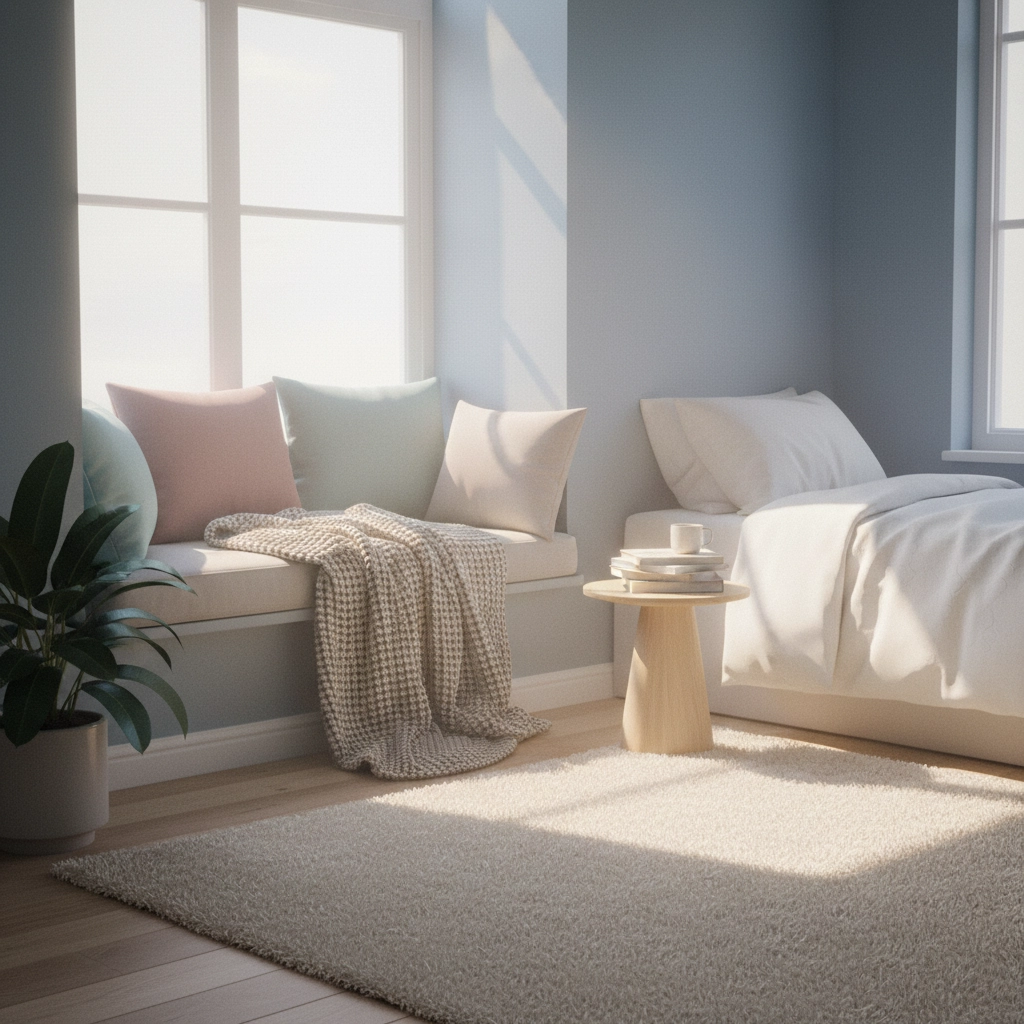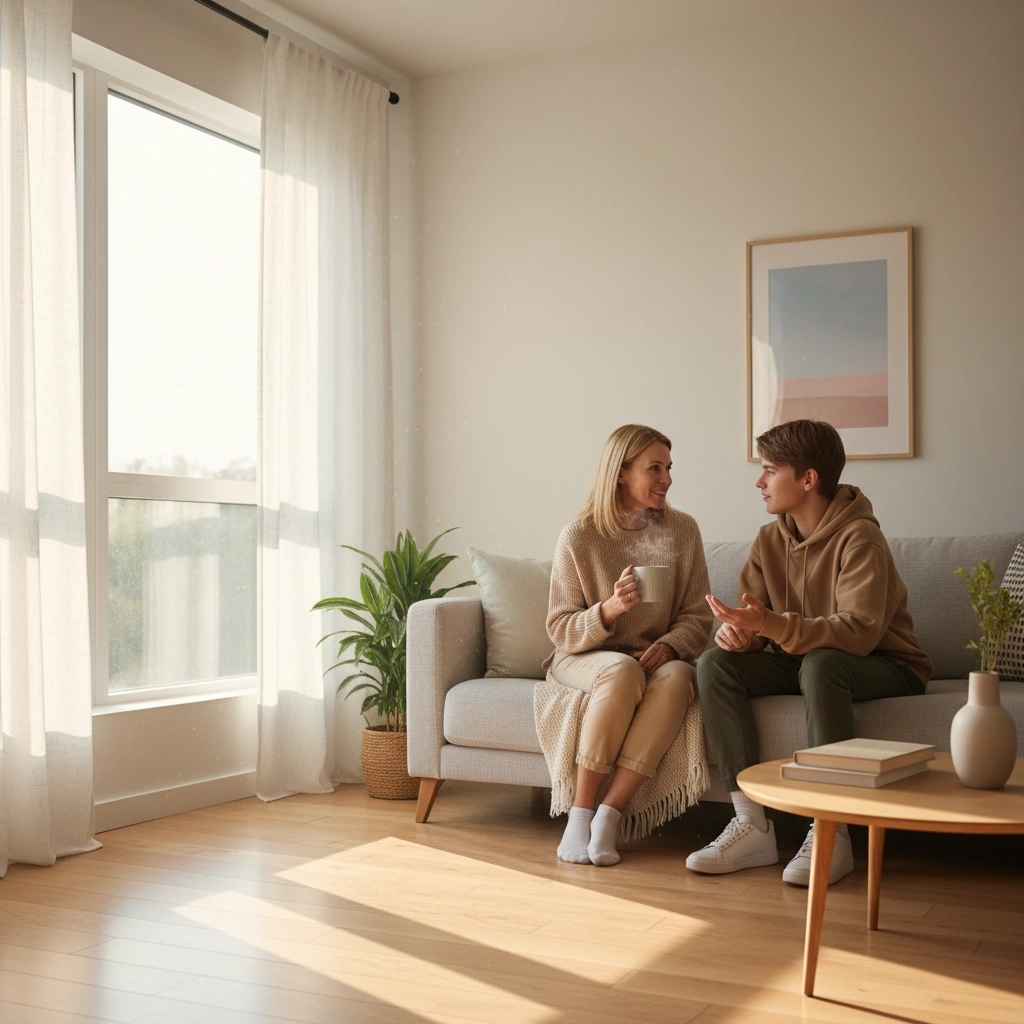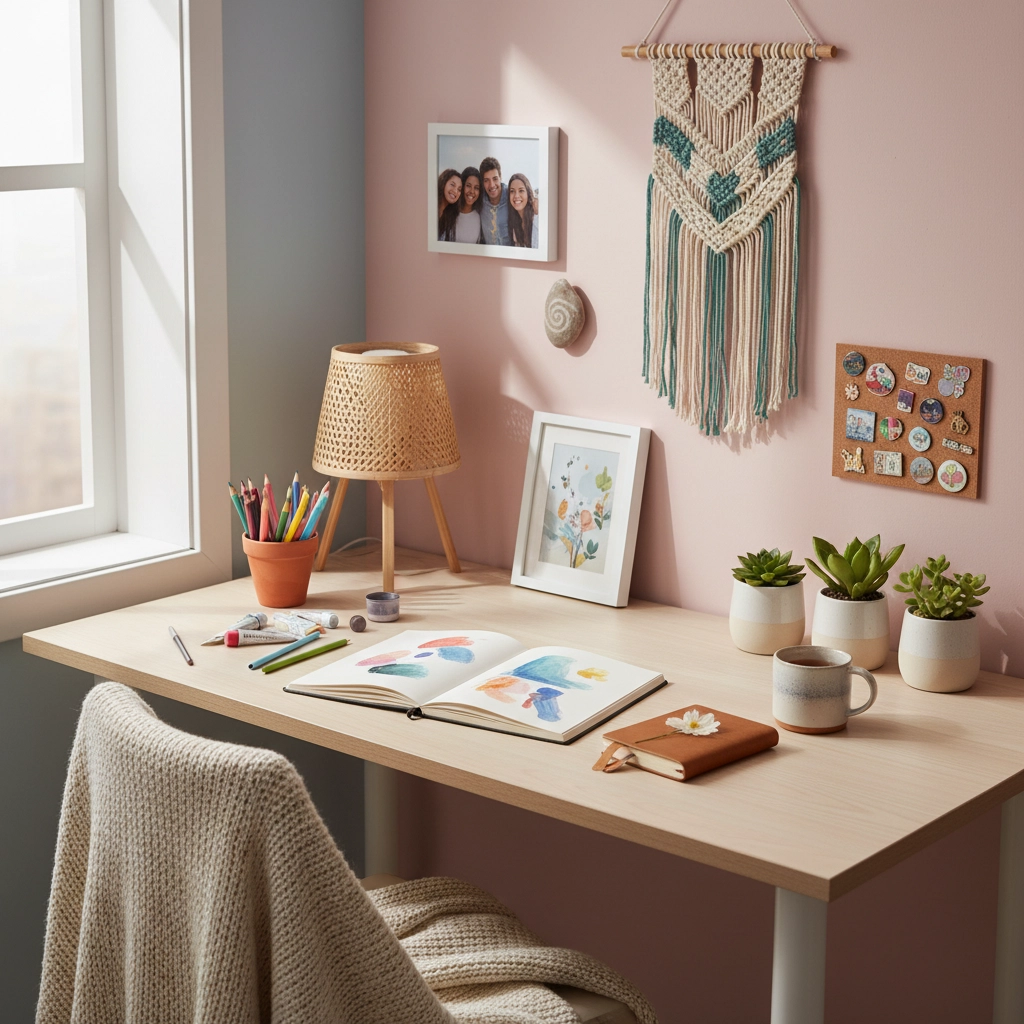Why Your Teen Needs Safe Spaces More Than Therapy (And How to Create Them in 5 Steps)
- clairestew
- Oct 9
- 6 min read
When your teenager is struggling, the instinct is often to jump straight to professional help. But here's what we've learned through decades of supporting Chicagoland families: safe spaces often matter more than therapy sessions: at least at first.
Before your teen can benefit from any therapeutic intervention, they need something even more fundamental: a place where they feel emotionally secure, heard, and free to be themselves without judgment. These environments become the foundation that makes all other support: including professional therapy: actually work.
Think of safe spaces as emotional first aid. Just like you'd stabilize someone before rushing them to the hospital, creating emotional safety helps teens regulate their feelings and build trust before they can engage meaningfully with more intensive support.
Why Safe Spaces Come First
Today's teens face unprecedented challenges. Between social media pressures, academic stress, climate anxiety, and an uncertain future, young people are living in a constant state of emotional overwhelm. Research shows that when we create safe space interventions for teens, we see remarkable improvements across multiple areas: significant reductions in PTSD symptoms, anxiety, and intrusive thoughts, along with decreased aggressive behaviors and improved social connections.
But here's the key insight: teens often hold back from sharing because they fear punishment or shame. When young people feel like they can't be honest about their struggles, they don't stay safe: they just stay silent.
Safe spaces break through this barrier by addressing the root issue: emotional safety. When teens feel truly heard and respected, they're more likely to open up about what they're experiencing before reaching a crisis point.

The Foundation Safe Spaces Provide
Creating safe environments does more than offer immediate relief: it builds lasting psychological resilience. These spaces boost self-esteem, reduce social anxiety, and enhance overall quality of life among young people. They increase life satisfaction and happiness while improving teens' ability to cope with stress, resist harmful behaviors, and build stronger relationships.
The interpersonal benefits are equally powerful. Safe spaces foster better relationships with family and friends, reduce the stigma teens feel about mental health, and promote positive social behaviors. This foundation makes teens more open to seeking professional help when they need it and more capable of engaging meaningfully with that support.
5 Steps to Create Powerful Safe Spaces for Your Teen
Step 1: Design the Physical Environment for Comfort and Privacy
Start with the basics: comfort and privacy. Your teen's physical environment should signal safety to their nervous system. This means ensuring they have a cozy, organized space that feels genuinely theirs: whether that's their bedroom, a corner of the living room, or even the kitchen table during certain times.
Prioritize comfort with soft furnishings, good lighting, and personal touches that make the space inviting. Respect their need for privacy by giving your teen control over their personal space and avoiding intrusion without permission.
The goal isn't perfection: it's creating a sensory environment that helps your teen's body and mind relax. When someone feels physically comfortable, they're more likely to open up emotionally.
Step 2: Establish Emotional Safety Through Non-Judgmental Responses
This is where the real work happens. Emotional safety means your teen knows they can share difficult things without facing immediate criticism, lectures, or punishment. It means responding calmly and thoughtfully when they tell you something that worries or surprises you.
Practice active listening by giving your full attention when your teen speaks. Put down your phone, make eye contact, and resist the urge to immediately fix or judge their experiences. Instead, validate their emotions by acknowledging that their feelings are real and understandable, even if you don't agree with their perspective.
Remember: validation doesn't mean agreement. You can say, "That sounds really frustrating," without endorsing everything they did in response to that frustration.

Step 3: Normalize Mental Health Conversations
Make emotional well-being a regular topic in your household. This doesn't mean turning every interaction into a therapy session, but rather incorporating mental health awareness into daily conversations, media discussions, and family routines.
Talk about emotions the same way you'd discuss physical health: naturally and without drama. When you see mental health topics in the news or entertainment, use them as conversation starters. Share your own experiences with stress, anxiety, or difficult emotions in age-appropriate ways.
This normalization removes stigma and makes seeking support feel natural rather than crisis-driven. When mental health becomes as normal to discuss as physical health, teens develop the vocabulary and comfort level they need to articulate their needs.
Step 4: Respect Their Processing Style and Timeline
Not every teen processes emotions the same way or on the same timeline. Some are verbal processors who need to talk things through immediately. Others need time to think before they're ready to share. Some express themselves better through writing, art, music, or other creative outlets.
Give your teen the freedom to process their feelings on their own terms. Don't pressure them to share more than they're ready to, and don't take it personally if they're not ready to open up immediately. Your job is to create the conditions for connection: not to force it.
Stay consistent in showing up, even when your teen isn't ready to talk. Your steady presence builds the emotional trust they need to eventually open up. Sometimes the most powerful thing you can do is simply be available without pushing.

Step 5: Personalize the Space to Their Identity
Allow your teen to make their safe space truly theirs. This means letting them personalize their environment with items that reflect their identity, interests, and values. When teens have ownership over their space, they're more invested in using it and more likely to feel comfortable being authentic there.
This personalization might include artwork, photos, plants, books, or other meaningful objects. The key is ensuring the space feels genuinely theirs: not like a space you've designed for them, but one they've created for themselves with your support.
While maintaining basic safety guidelines, give them as much autonomy as possible over their personal environment. This ownership reinforces that their authentic self is welcome and celebrated in your home.
Building Community Beyond Your Home
Remember, safe spaces aren't limited to your house. Encourage your teen to identify and cultivate safe relationships and environments in their broader community: whether that's with extended family, trusted teachers, coaches, or friend groups that support their well-being.
For families in the Chicago area dealing with additional stressors like immigration concerns or other community challenges, creating these safe spaces becomes even more crucial. When the world outside feels uncertain, having a reliable emotional refuge at home provides the stability teens need to navigate everything else.
When Safe Spaces Lead to Professional Support
Here's the beautiful thing about creating safe spaces first: they make everything else more effective. Teens who feel emotionally safe at home are more likely to engage meaningfully with school counselors, therapists, and other professional support when needed.
Rather than replacing therapy, safe spaces create the conditions that help therapy work. They provide the trust and emotional regulation that teens need to take advantage of professional interventions when those become necessary.
If you're noticing signs that your teen might benefit from additional support beyond what you can provide at home, that's not a failure of your safe space: it's evidence that you've created an environment where your teen feels secure enough to acknowledge when they need more help.
Moving Forward Together
Creating safe spaces for your teenager isn't a one-time project: it's an ongoing practice of showing up consistently with love, respect, and emotional availability. The habits and tone you set now will shape how your teen approaches their mental health for years to come.
Every family's safe space will look different because every teen is different. What matters isn't perfection: it's the consistent message that your teen is valued, heard, and supported in your home.
For families in the Greater Chicago area who need additional resources or support in creating these environments, remember that asking for help is a sign of strength, not failure. Building community around mental health makes all of our families stronger.
The safe space you create today isn't just supporting your teen through their current challenges: it's teaching them how to create emotional safety for themselves and others throughout their lives. That's a gift that keeps giving long after they've left your home.
